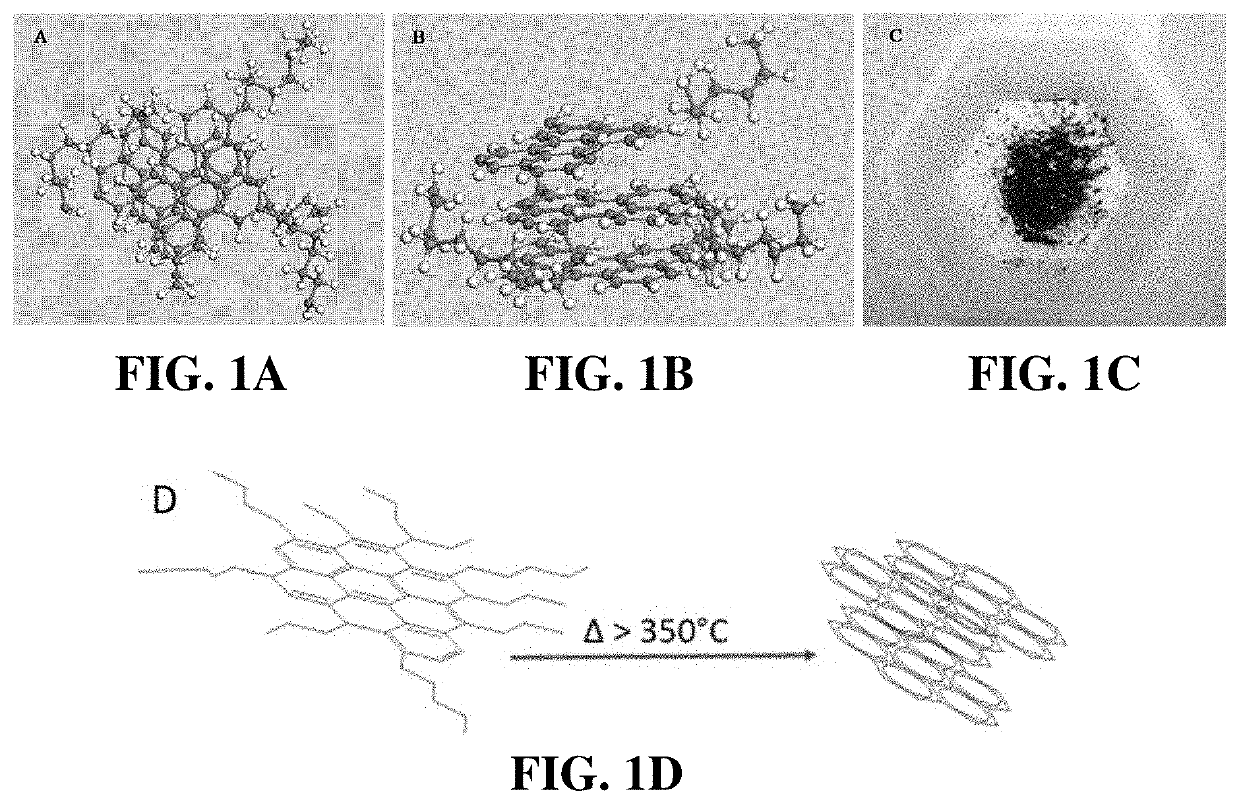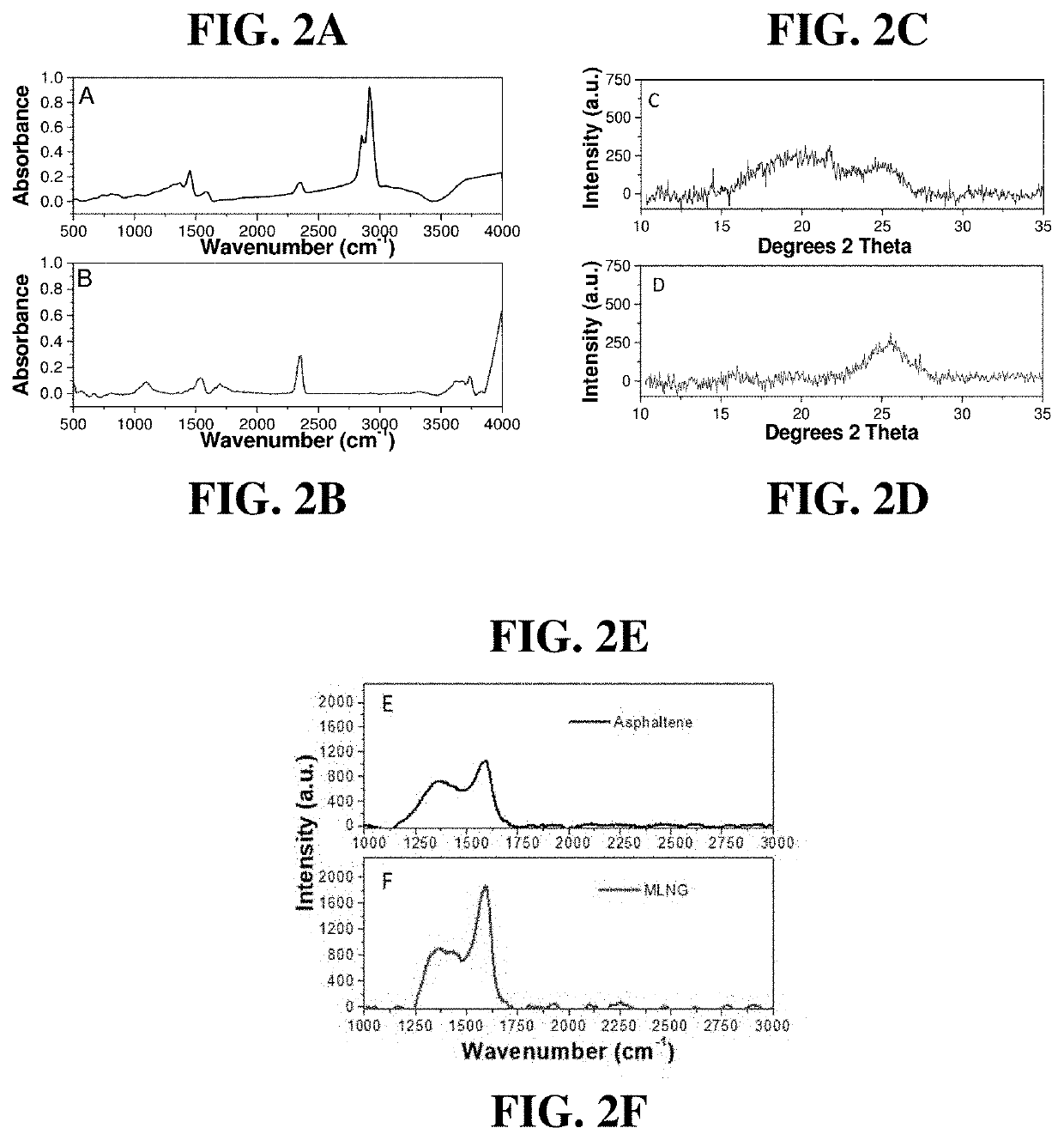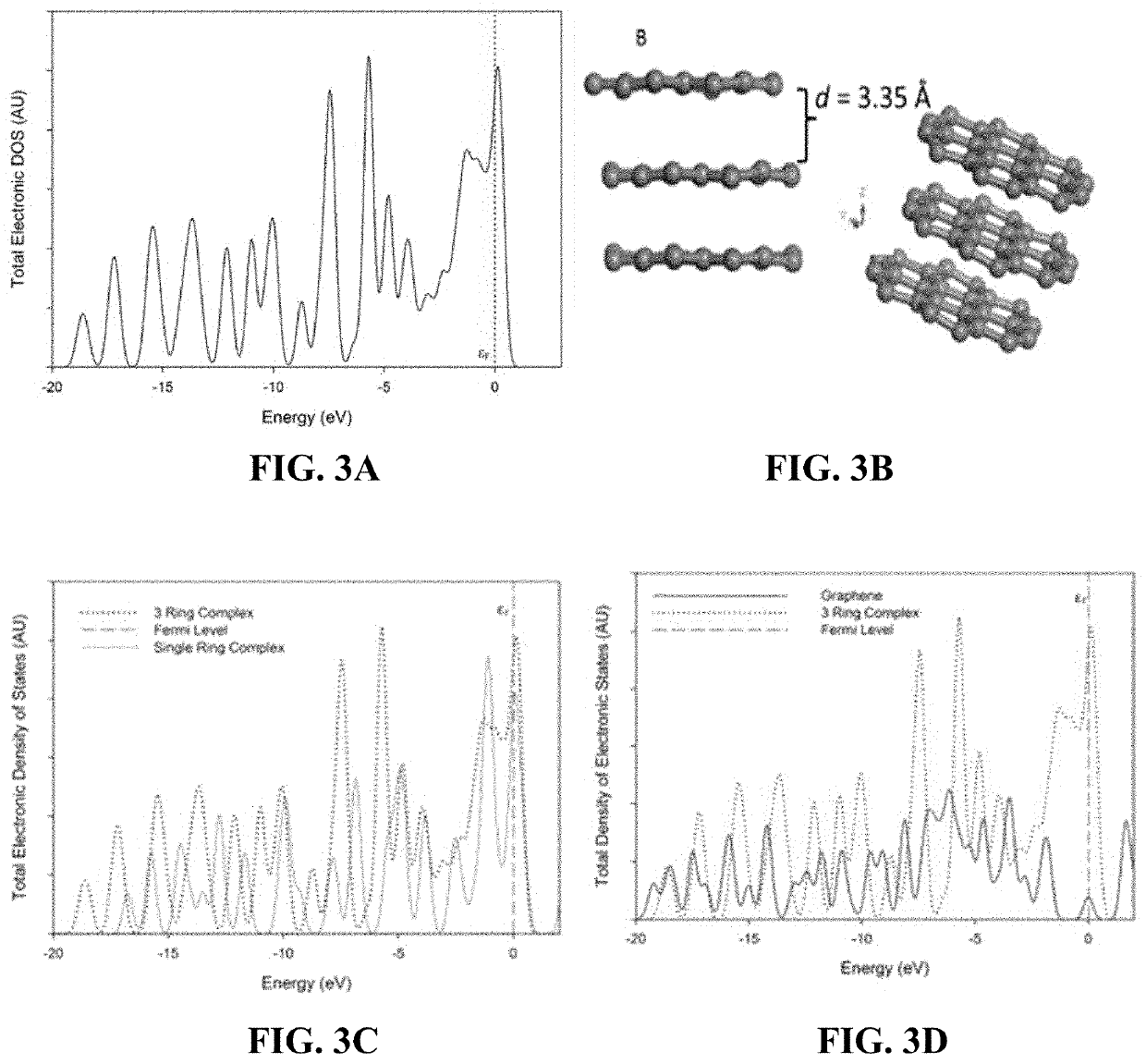Metallic carbon quantum wire from self-assembled alphaltene
a technology of carbon nanowires and alphaltene, which is applied in the field of quantum wires, can solve the problems of difficult determination of average and maximum values, research and industry has not produced a self-assembled nanowire produced from asphaltene materials, etc., and achieves the effects of low resistance contacts, small devices, and high performan
- Summary
- Abstract
- Description
- Claims
- Application Information
AI Technical Summary
Benefits of technology
Problems solved by technology
Method used
Image
Examples
example 1
A. Materials and Methods
[0030]Synthesis:
[0031]Asphaltene mesophase pitch was used as the precursor discotic liquid crystal (DLC) and was extracted from Crude oil (Mayan) by n-alkane (1:40 v / v). The solution was mixed for 24 hours and filtered (Whatman 40). The retentate was dissolved in toluene and filtered again and the solution was collected and evaporated. 100 mg of sample was heated to 500° C. in the absence of air for 10 minutes in a flask using Schlenk technique and kept under vacuum.
[0032]Nanowire Fabrication:
[0033]After thermal treatment, dilute solutions of samples in chlorobenzene (5 μg / ml) were drop coated onto various substrates (Cu, Highly Ordered Pyrolytic Graphite, SiO2 / Si) and nanowires self-assemble on the surface of substrates. Drop coating is the deposition of a volume of material in solution, after which the solvent is evaporated depositing the material at the location of deposition.
[0034]Characterization:
[0035]Fourier Transform Infrared (FTIR) was taken of sampl...
PUM
| Property | Measurement | Unit |
|---|---|---|
| length | aaaaa | aaaaa |
| height | aaaaa | aaaaa |
| height | aaaaa | aaaaa |
Abstract
Description
Claims
Application Information
 Login to View More
Login to View More - R&D
- Intellectual Property
- Life Sciences
- Materials
- Tech Scout
- Unparalleled Data Quality
- Higher Quality Content
- 60% Fewer Hallucinations
Browse by: Latest US Patents, China's latest patents, Technical Efficacy Thesaurus, Application Domain, Technology Topic, Popular Technical Reports.
© 2025 PatSnap. All rights reserved.Legal|Privacy policy|Modern Slavery Act Transparency Statement|Sitemap|About US| Contact US: help@patsnap.com



